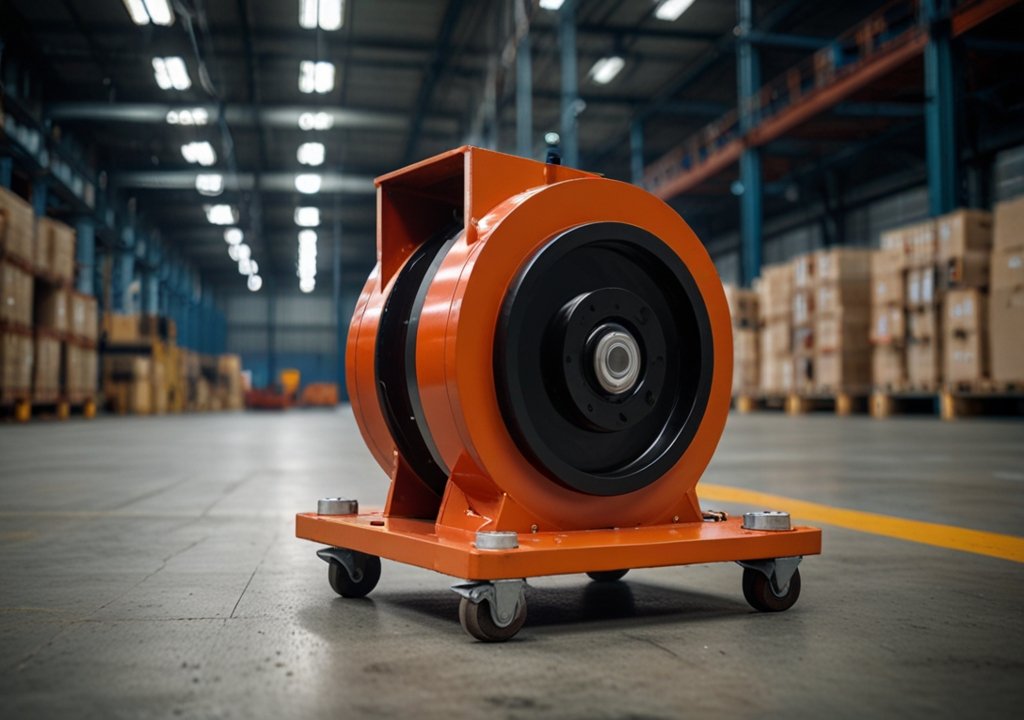Key Takeaways:
- Industrial casters are crucial in logistics and manufacturing, aiding movement and efficiency.
- Diverse types of casters cater to varying needs and environments in the industry.
- Maintenance and material choice are vital for optimal caster performance.
- The technological advancements in casters improve operational productivity.
Understanding Industrial Casters
In the hectic manufacturing and logistics world, ensuring the efficient movement of goods and machinery is paramount. Industrial casters, albeit often overlooked, are pivotal to these operations, effortlessly transforming how heavy equipment and materials are transported. Solutions such as noise reducing caster systems have become increasingly popular as they enhance movement efficiency and contribute to quieter workplaces, essential for maintaining a productive and comfortable working environment.
At a glance, casters might seem like simple attachments, but their impact on workplace safety and ergonomics is enormous. By facilitating the seamless transport of even the heaviest items, they reduce the risk of injury for workers by minimizing physical exertion. As global manufacturing scales to new heights, driven by the need for rapid production and shipment, these compact yet robust components become crucial to maintaining a streamlined workflow.
Diversity in Caster Types
The various caster types on the market address various industrial requirements, each intended to address a particular problem. Take swivel casters, for instance. Known for their impressive maneuverability, these are ideally suited for applications requiring tight turns or movement through winding aisles. On the other hand, rigid casters are engineered for linear motion, providing unmatched stability and control during straight-line travel—a necessity for maintaining load balance across longer transport routes.
Choosing the correct caster type is imperative for optimizing efficiency and safety. Each variety serves a unique purpose, and understanding this purpose within one’s specific operational context ensures that logistics and manufacturing tasks are performed with maximum effectiveness and minimum effort.
Role in Logistics and Manufacturing
Industrial casters are crucial in the manufacturing and logistics industries, which rely primarily on their capacity to transport goods rapidly and effectively. Casters streamline operations by alleviating the burden of manually transporting heavy loads, substantially reducing time and labor costs. Consider a warehouse where speed and precision are critical—equipped with the right casters; operations can be conducted at an accelerated pace without compromising safety or accuracy.
Incorporating casters in these industries boosts productivity and offers a significant competitive edge. Companies who adeptly leverage these simple yet effective components often find themselves better positioned to react swiftly to changing market demands, thereby increasing their potential to secure long-term success.
Material Considerations for Optimal Performance
The material from which casters are constructed can significantly influence their performance and longevity. For instance, steel casters are rugged and designed for heavy-duty applications, capable of withstanding the pressures of industrial environments. Meanwhile, nylon casters offer a smoother ride, perfect for dealing with delicate flooring surfaces or environments where noise reduction is paramount.
Selecting the right material involves carefully evaluating the operational environment, the types of surfaces present, and the weight of the moving loads. By choosing an appropriate caster material, businesses can prevent surface damage and enhance the lifespan of both the caster and the flooring, leading to cost savings and improved operational efficiency.
Maintenance Tips for Long-lasting Casters
Regular maintenance is critical to ensuring that casters remain in excellent working condition. This includes routine cleaning to remove debris obstructing wheel movement and regular lubrication to ensure bearings function smoothly. Neglecting these practices can lead to caster malfunction, resulting in operational interruptions and an increased risk of workplace accidents.
Furthermore, it’s prudent to inspect casters periodically for wear and tear. Early identification and replacement of worn parts can mitigate disruptions and maintain seamless operation. By integrating these maintenance activities into regular workflow schedules, businesses can significantly extend the lifespan of their casters, ensuring that they continue to perform efficiently and safely.
Technological Advancements in Caster Design

Technological advancements have brought about a new era of brilliant caster designs, turning conventional roles into elements of increased efficiency. Modern casters increasingly incorporate innovative technologies, enabling tracking movement patterns and predictive maintenance. Such innovations, as highlighted in recent reports, are critical as they synchronize with the digitalization of material handling, offering opportunities for improved resource management and reduced downtime.
Embracing these advancements enables businesses to anticipate requirements and make informed decisions, reducing reliance on reactive strategies. The result is a more proactive approach to operations, ensuring businesses remain dynamic and adaptable in ever-evolving markets.
Implementing Casters in Modern Settings
Incorporating the right casters into modern settings requires careful assessment of specific needs. Factors including load capacity, usage frequency, and environmental variables must be taken into account to ensure the chosen casters operate at their best. Custom solutions, including caster designs precisely suited to operating needs, could be required to solve specific industry problems.
Businesses can significantly enhance operational efficiency by considering these considerations, facilitating smooth and effective handling across diverse industrial applications. Ultimately, the thoughtful implementation of appropriate caster systems can transform routine tasks into streamlined processes, supporting the overarching goals of productivity and safety.
Conclusion: The Impact of Casters on Industry Efficiency
To sum up, industrial casters are crucial elements that significantly improve the effectiveness and security of production and logistics processes. Businesses can realize productivity and workplace safety improvements through careful selection, maintenance, and integration of these components. As caster technology continues to evolve, the opportunities for further advancements in industry operations expand, promising even more outstanding achievements.











